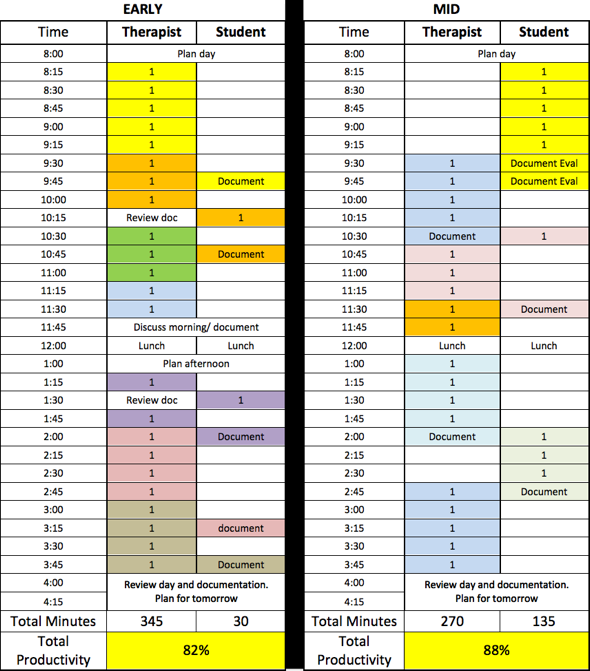Think back to when you were a therapy student. What did you love about your clinical experience? Most likely your favorite internships were with energetic and excited therapists in a lively learning environment, and I bet you that you can still remember that clinical instructor who mentored you on the way to becoming a professional. Wouldn’t you love to give back to your profession in a meaningful way? There is no better way to learn that than to teach, and I know that our therapists have so much to give – not only intellectually, but teaching our amazing culture can leave such a lasting impression on our students. And guess what? Those students who have a wonderful experience with us will also want to be part of our staff after graduation. Taking students is an incredible win-win for the student, the therapist, and our facilities.
Ciara Cox is our therapy resource and an instructor in the School of Occupational Therapy at Samuel Merritt University, so teaching and students are near and dear to her heart. She shares some nuts and bolts strategies on making the student experience successful for both mentor and student with consideration to today’s complex healthcare reimbursement environment below.
Why take a student?
- To give back to the profession
- To provide intellectual stimulation for the supervising therapist
- To provide a continuing supply of therapists
- To expose students to the wonderful rehabilitation environment of SNFs
- For the recruiting opportunity
There were a couple of changes in Medicare regulations in Fall 2011 that improve the experience of students treating Medicare A residents (Part B rules have not changed).
- Students are no longer required to be in line-of-sight of the therapist during treatment. The RAI manual states “Within individual facilities, supervising therapists/assistants must make the determination as to whether or not a student is ready to treat patients without line-of-sight supervision. Additionally all state and professional practice guidelines for student supervision must be followed.”
- For Medicare A co-treatments, both disciplines can now receive credit for the entire treatment session. The RAI manual states “When two clinicians, each from a different discipline, treat one resident at the same time (with different treatments), both disciplines may code the treatment session in full. All policies regarding mode, modalities and student supervision must be followed. The decision to co-treat should be made on a case by case basis and the need for co-treatment should be well documented for each patient.”
Information in quotation marks above is from:
CMS.(September, 2011).RAI version 3.0 Manual.CH 3: MDS Items [O]. Retrieved from https://www.cms.gov/NursingHomeQualityInits/45_NHQIMDS30TrainingMaterials.asp
Please remember that if a student and his/her supervising therapist are each treating one resident at the same time that these treatments are not to be billed as individual treatments. The student is seen as an extension of the supervising therapist and the treatments should be billed as concurrent treatment as the therapist is responsible for both treatments.
The schedules below show that even early in an internship the therapist and student team can carve out non-patient time for mentoring and still maintain a good productivity. Each color represents a resident treatment. As you can see all of the treatments are individual in this example. As the internship progresses and the student becomes more independent and has a larger caseload, the therapist will have time to do program development or other important tasks in the facility. The therapist must always be readily available to the student.

